March 3 update on COVID-19 in MN: Vaccinations quicken; Walz upbeat about State Fair

Like this?
Log in to share your opinion with MPR News and add it to your profile.
Like this?
Thanks for liking this story! We have added it to a list of your favorite stories.
3 things to know:
Vaccination trend line hits another new high
“Brass ring grabbable” on State Fair, Walz says
Hospitalizations, new cases and death counts stay modest
Updated: 5:15 p.m.
Vaccination acceleration may finally be here.
The Health Department on Wednesday reported about 32,000 new vaccinations in Minnesota, nearly twice the number from last Wednesday. The seven-day trend is running at nearly 39,000 shots daily now, the highest since vaccinations began in late December.
State public health leaders have said for weeks that they’d be ready to ramp up when they got more supply. With the federal government now promising enough vaccine to inoculate every adult American by the end of May — two months earlier than expected — the table seems set.
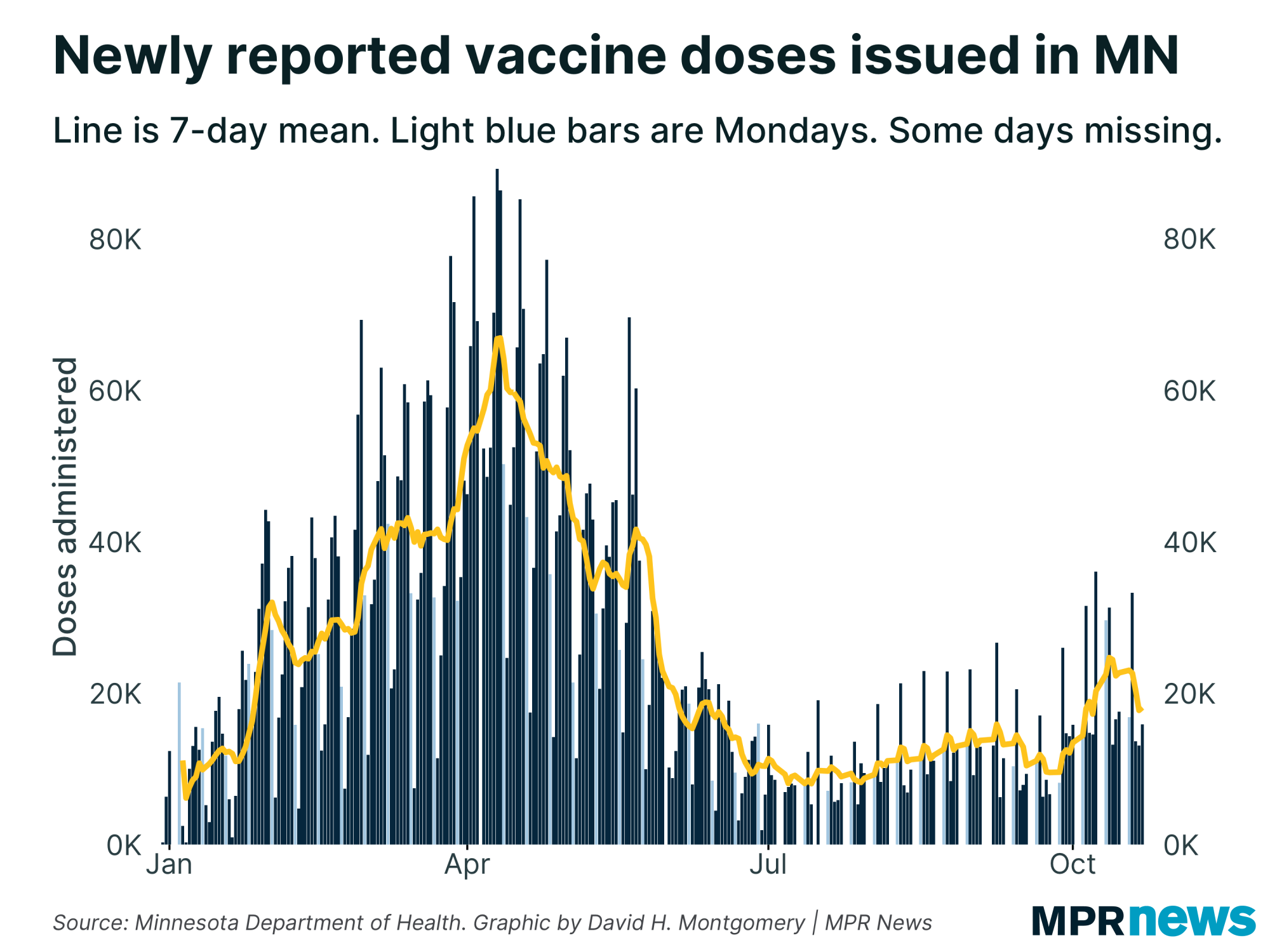
About 16.7 percent of Minnesotans — more than 928,000 people — had received at least one dose as of Wednesday’s Health Department update, with 484,383 — about 8.7 percent — completely vaccinated.
Support the News you Need
Gifts from individuals keep MPR News accessible to all - free of paywalls and barriers.
By Thursday, the total number of Minnesotans reported completely vaccinated should eclipse the total number of known, confirmed COVID-19 cases in the entire pandemic. At the current rate, 80 percent of Minnesota adults should be able to get at least one shot by late June.
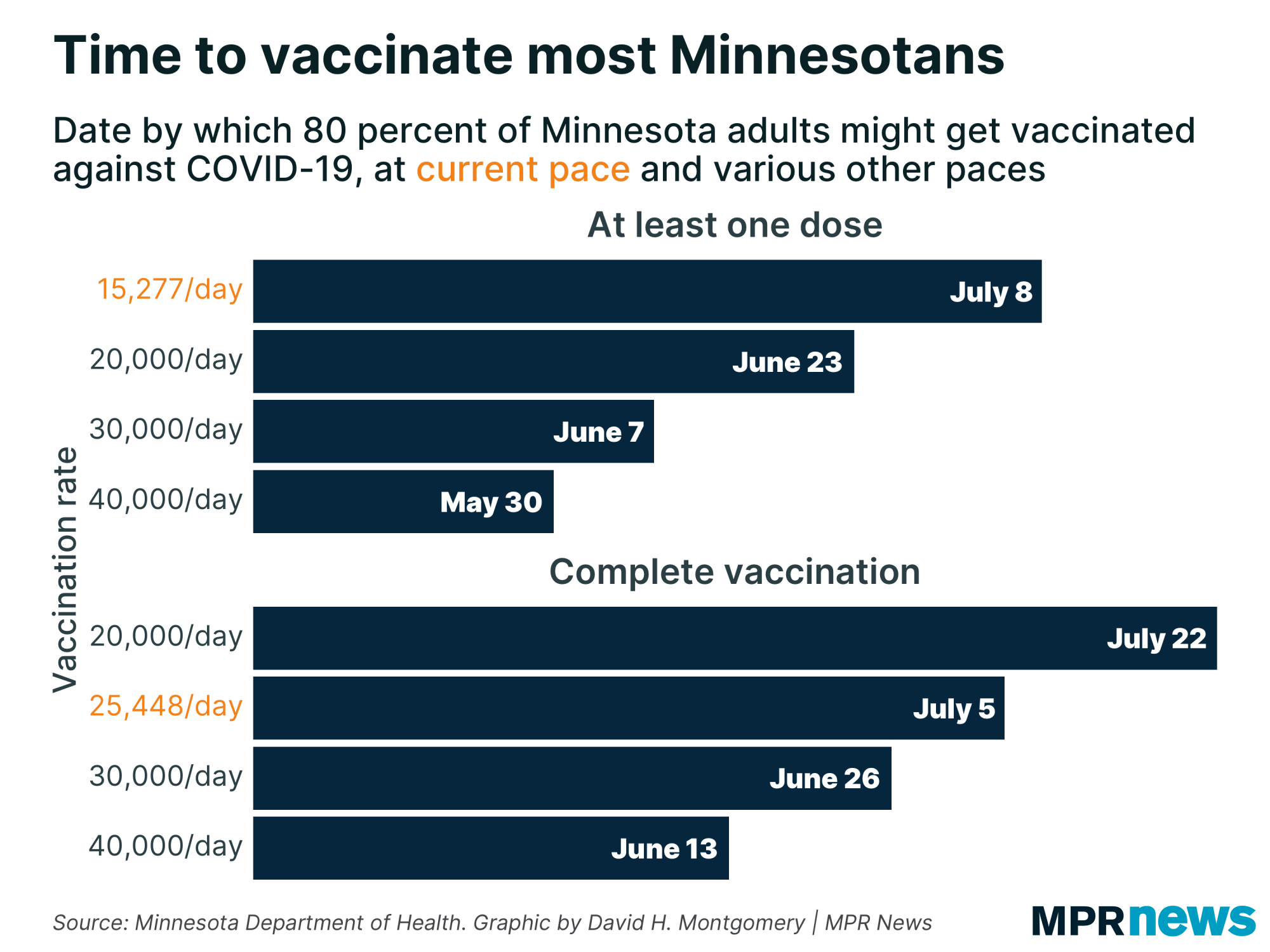
Gov. Tim Walz was upbeat enough about the current situation that he told reporters Wednesday the Minnesota State Fair was within reach this year after COVID-19 concerns canceled it in 2020.
“The brass ring is pretty grabbable with the State Fair” this year, he said as he highlighted the arrival of the Johnson & Johnson vaccine at M Health Fairview warehouse in Minneapolis. Activities for “June and beyond, those look pretty promising,” he added.
The inoculation picture has brightened with the addition of the J&J doses, which require only one shot. More than 45,000 doses of the newly approved vaccine should be distributed in Minnesota this week. Public health authorities here view it as a game changer in their efforts to inoculate Minnesotans quickly.
Walz said there will be a drop off in J&J supply following the initial shipment but that the state would be getting more shipment of other vaccines in the meantime and the J&J flow would resume in a few more weeks.
“This is a good vaccine. It's 100 percent effective against death, it's almost that against hospitalizations or severe disease,” Walz said at a news conference after his tour. “I'll tell Minnesotans, when you get the opportunity, roll up your sleeves and take the vaccine.”
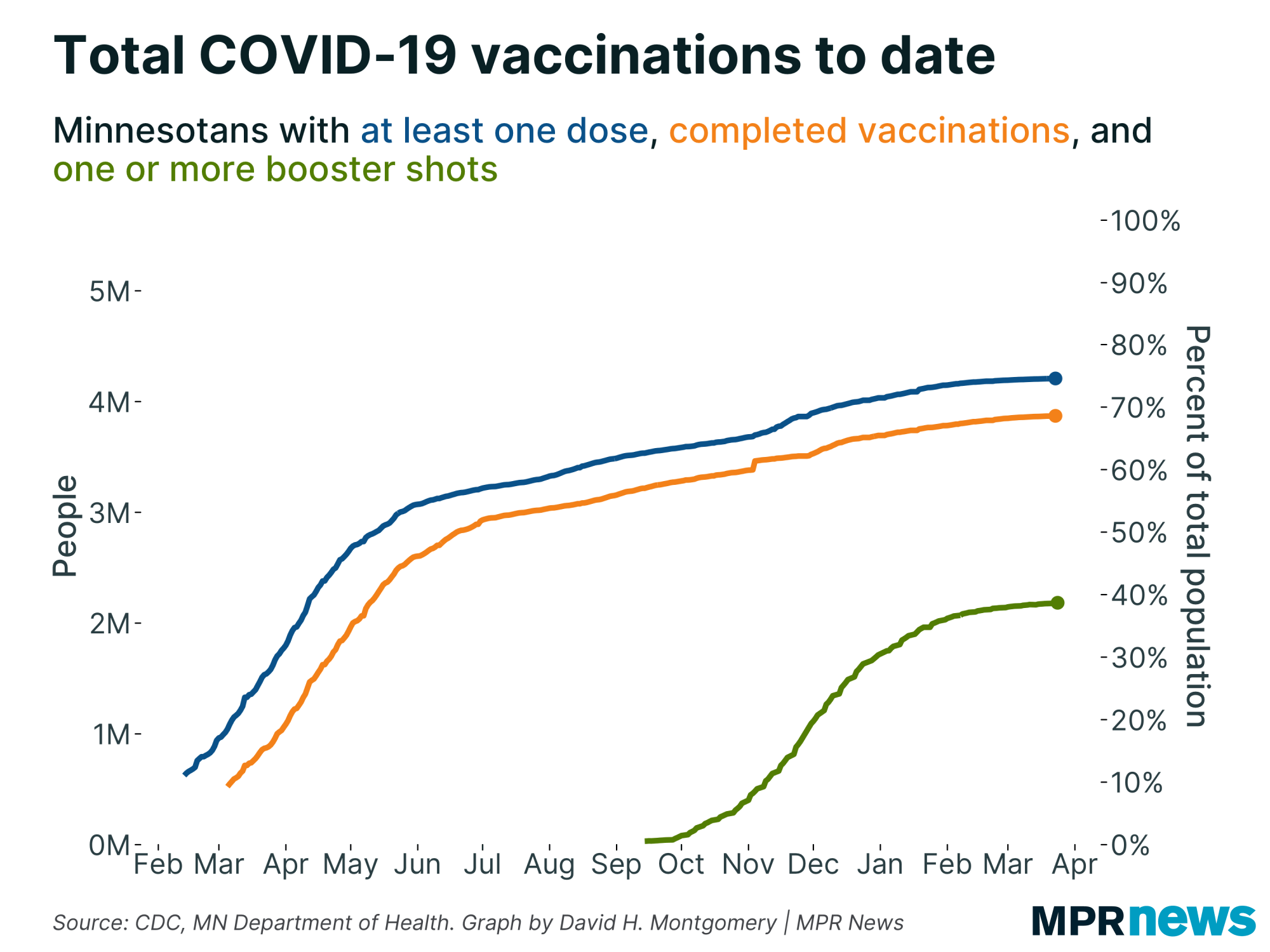
Fifty-four percent of Minnesotans 65 and older have received at least one shot currently, according to Health Department calculations. That’s important since officials have said the state will expand vaccination eligibility when 70 percent of that population gets a first dose.
Officials were expected to meet that goal by the end of March, but Walz on Wednesday said it will come faster than that.

Minnesota currently ranks 16th among states in doses administered per 100,000 people, according to data collected by the federal Centers for Disease Control and Prevention.
Officials on Tuesday said that 84 percent of Minnesota’s nursing home residents had received at least an initial dose while 69 percent had been completely vaccinated; 89 percent of assisted living residents had at least one dose while 63 percent received the complete series.
Pandemic metrics hold steady
While the pace of vaccinations is picking up, Minnesota’s COVID-19 numbers show the state stable in a good way.
Hospitalization rates remain encouraging at levels last seen before the late-fall surge in cases. The Health Department on Tuesday reported 243 people in Minnesota hospitals with COVID-19, with 57 needing intensive care, staying down at relatively low levels.
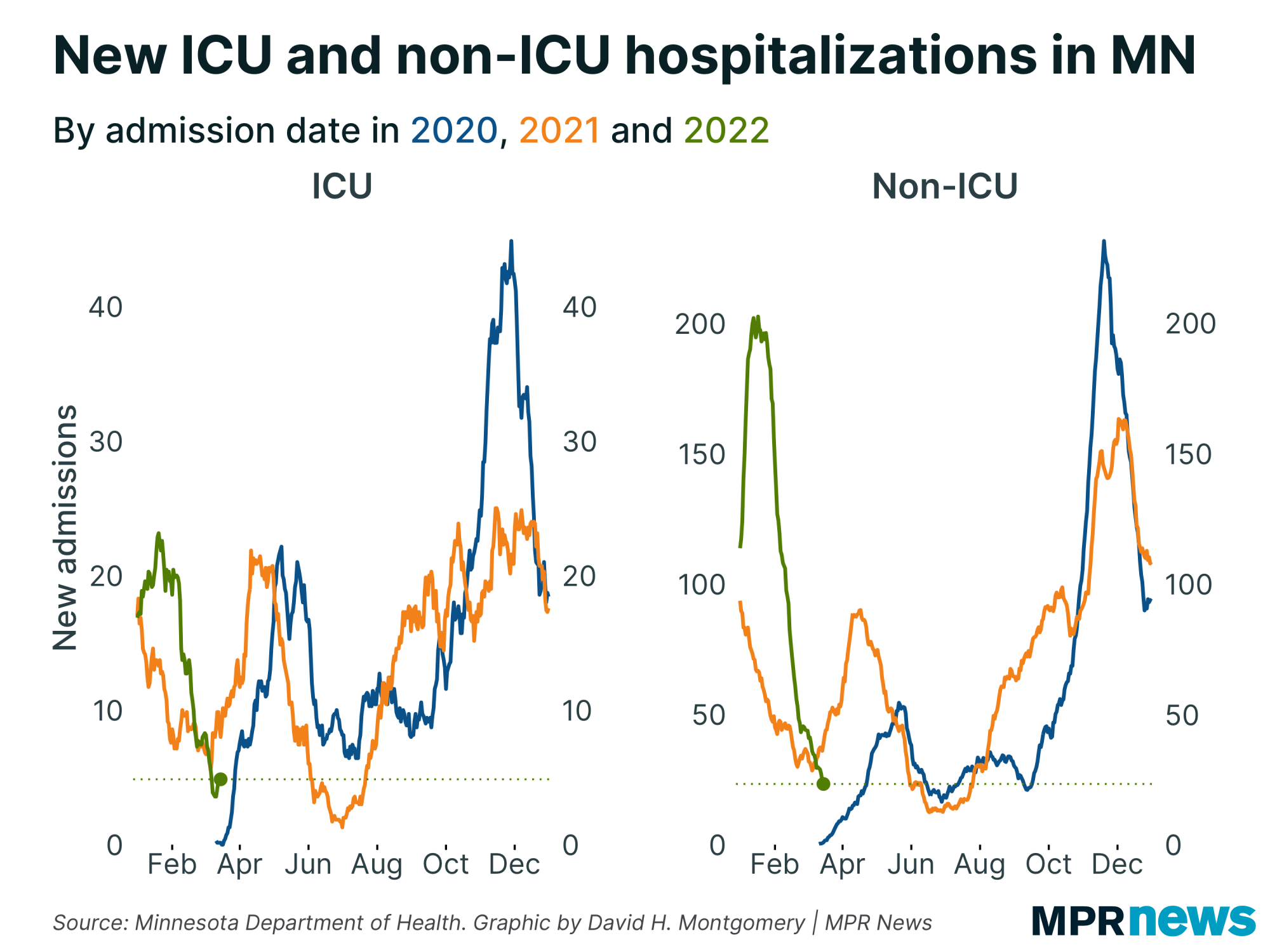
Known, active cases came in at 6,675, continuing a trend that stayed fairly stable through February and remains down dramatically from late November and early December, when active cases hovered around 50,000.
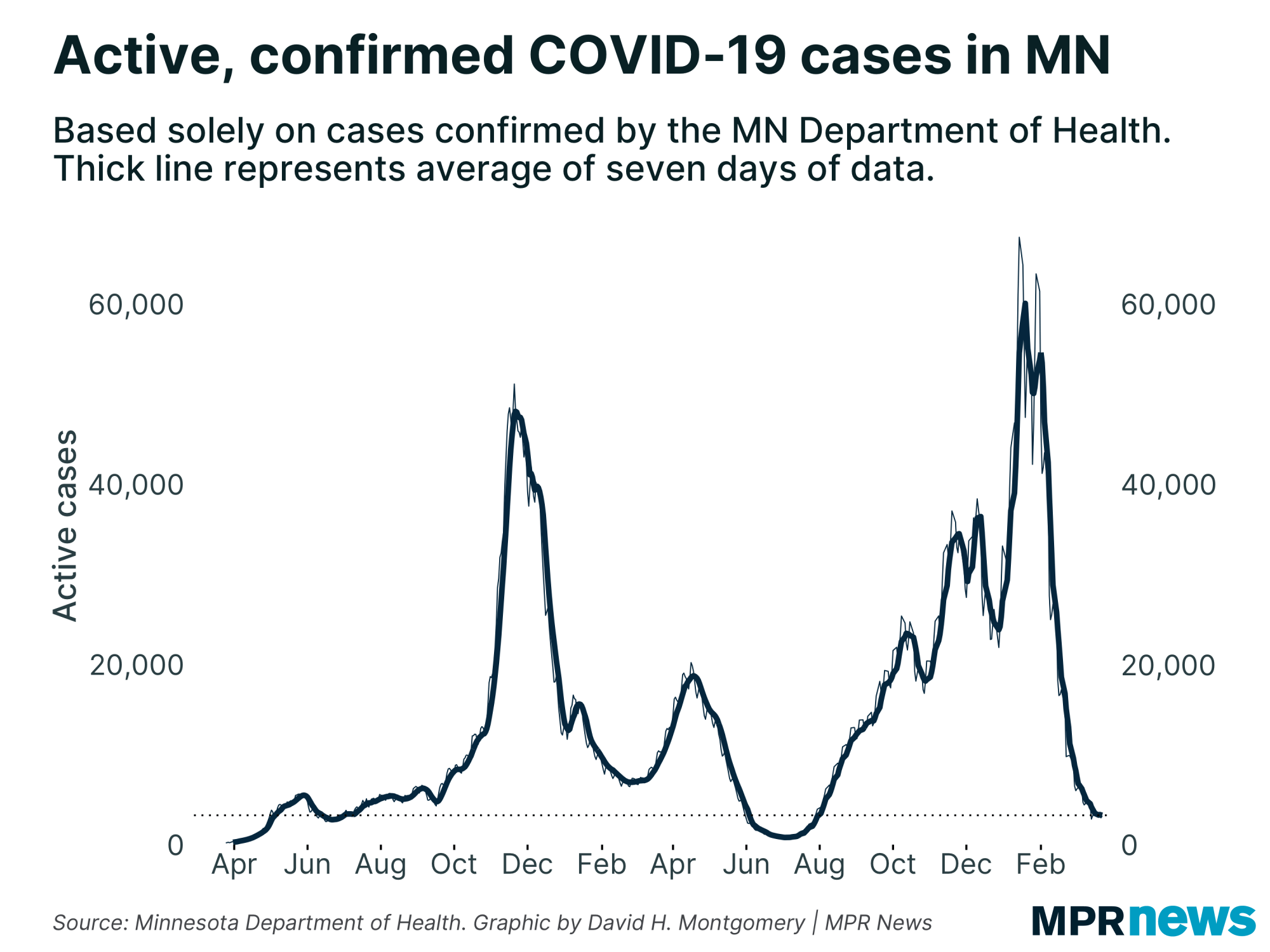
Seventeen newly reported deaths raised Minnesota’s toll to 6,507. Among those who’ve died, about 62 percent had been living in long-term care or assisted living facilities; most had underlying health problems.
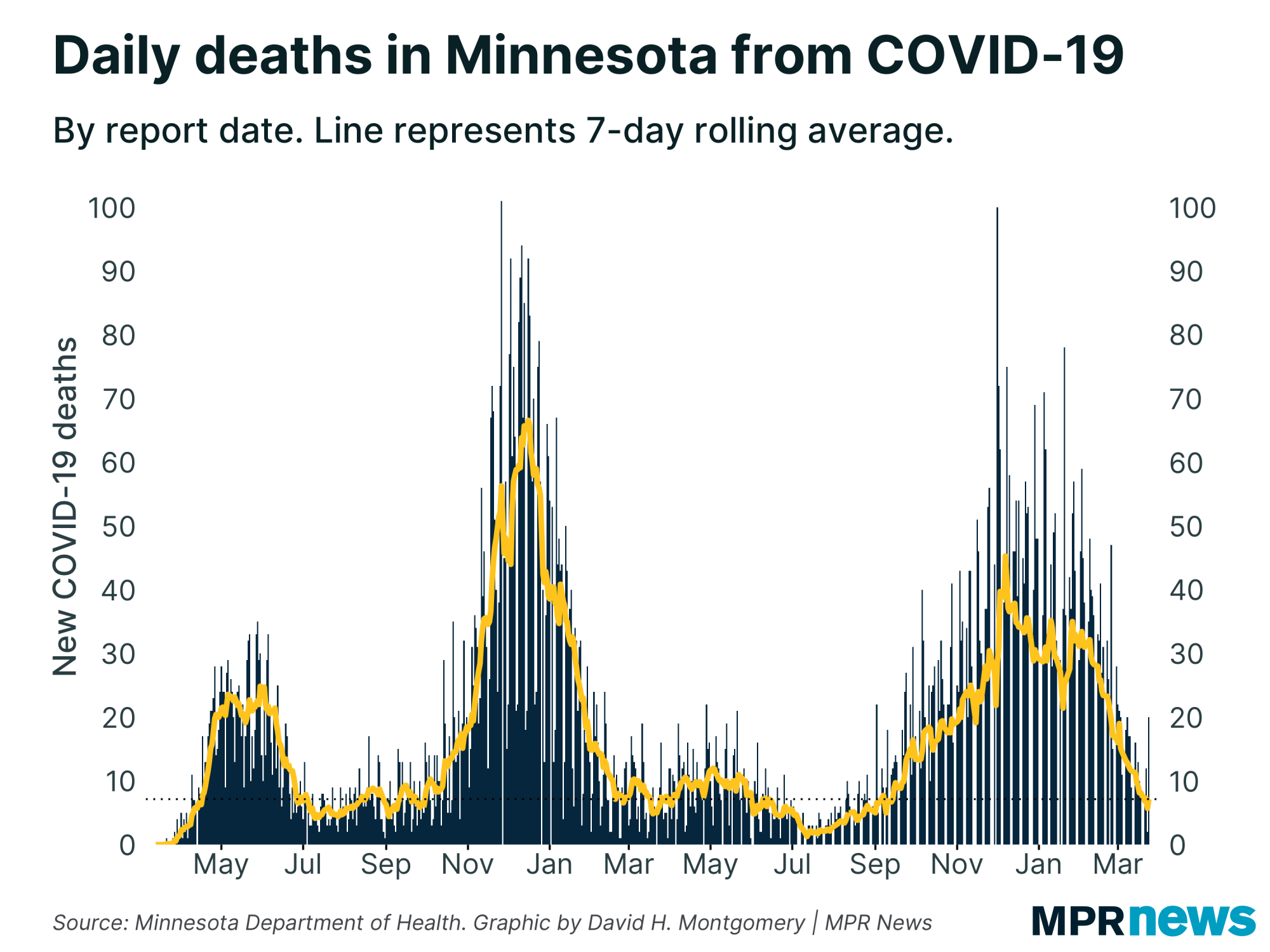
The state has recorded 486,434 total confirmed or probable cases so far in the pandemic, including 788 reported Wednesday. About 97 percent of Minnesotans known to be infected with COVID-19 in the pandemic have recovered to the point where they no longer need to be isolated.
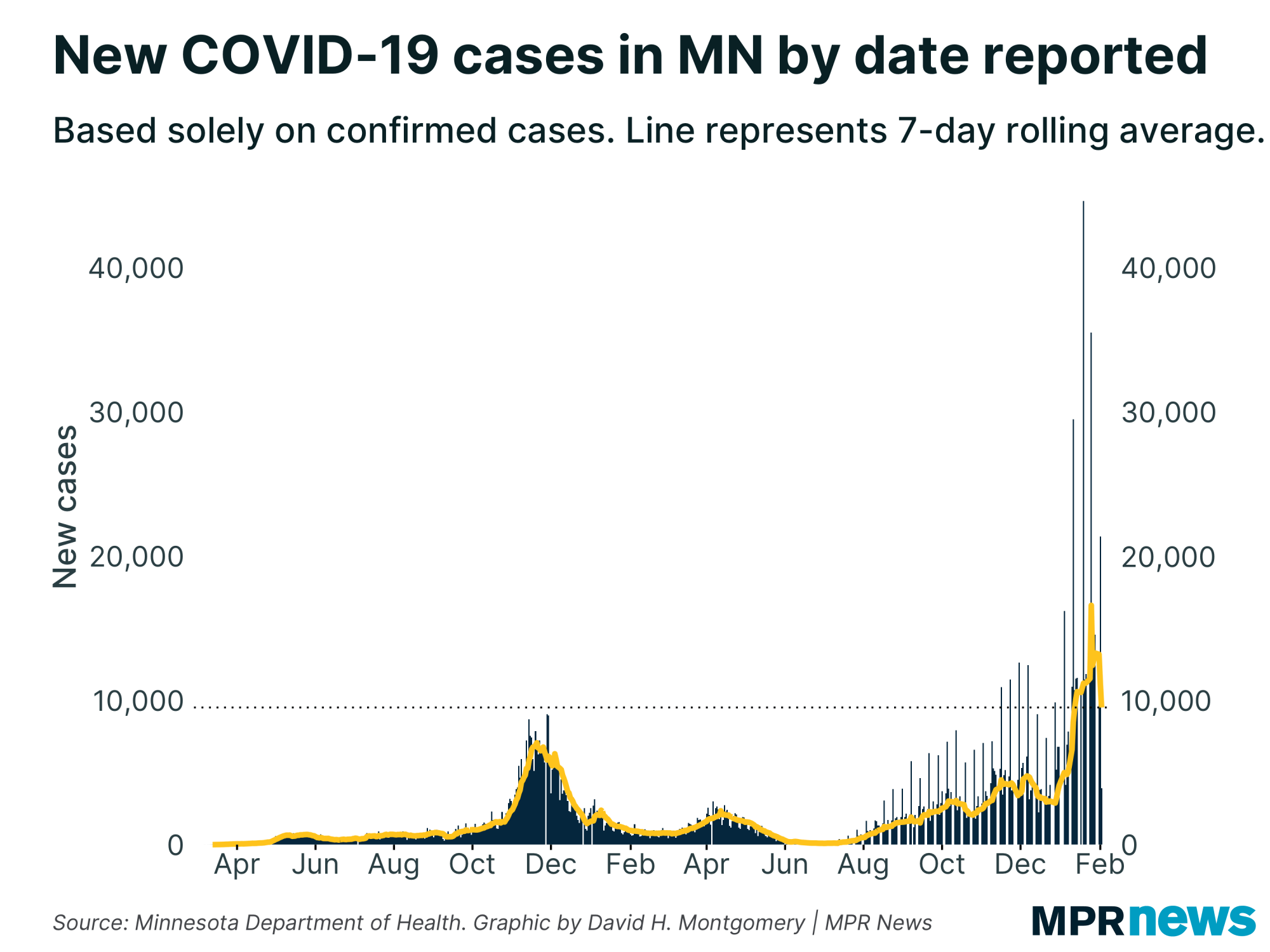
Long-term care facilities were once the epicenter of the disease, but cases have plummeted to levels not seen since early in the pandemic, said Lindsey Krueger, director of the state’s office of health facility complaints.
Ninety-six percent of facilities are allowing visitors now, she told reporters Tuesday. Shortages of health care workers at the facilities had also been a major concern early on, but the state’s emergency operations center currently has no requests for help on staffing, she added.
Officials continue to implore Minnesotans to stay vigilant against the disease. They remain concerned about COVID-19 strains with the potential to spread. Minnesota has 112 confirmed cases of the so-called U.K. variant and two cases of the Brazil variant.
Cases spread across age groups, regions
People in their 20s still make up the age bracket with the state’s largest number of confirmed cases — more than 91,000 since the pandemic began, including more than 48,000 among those ages 20 to 24.
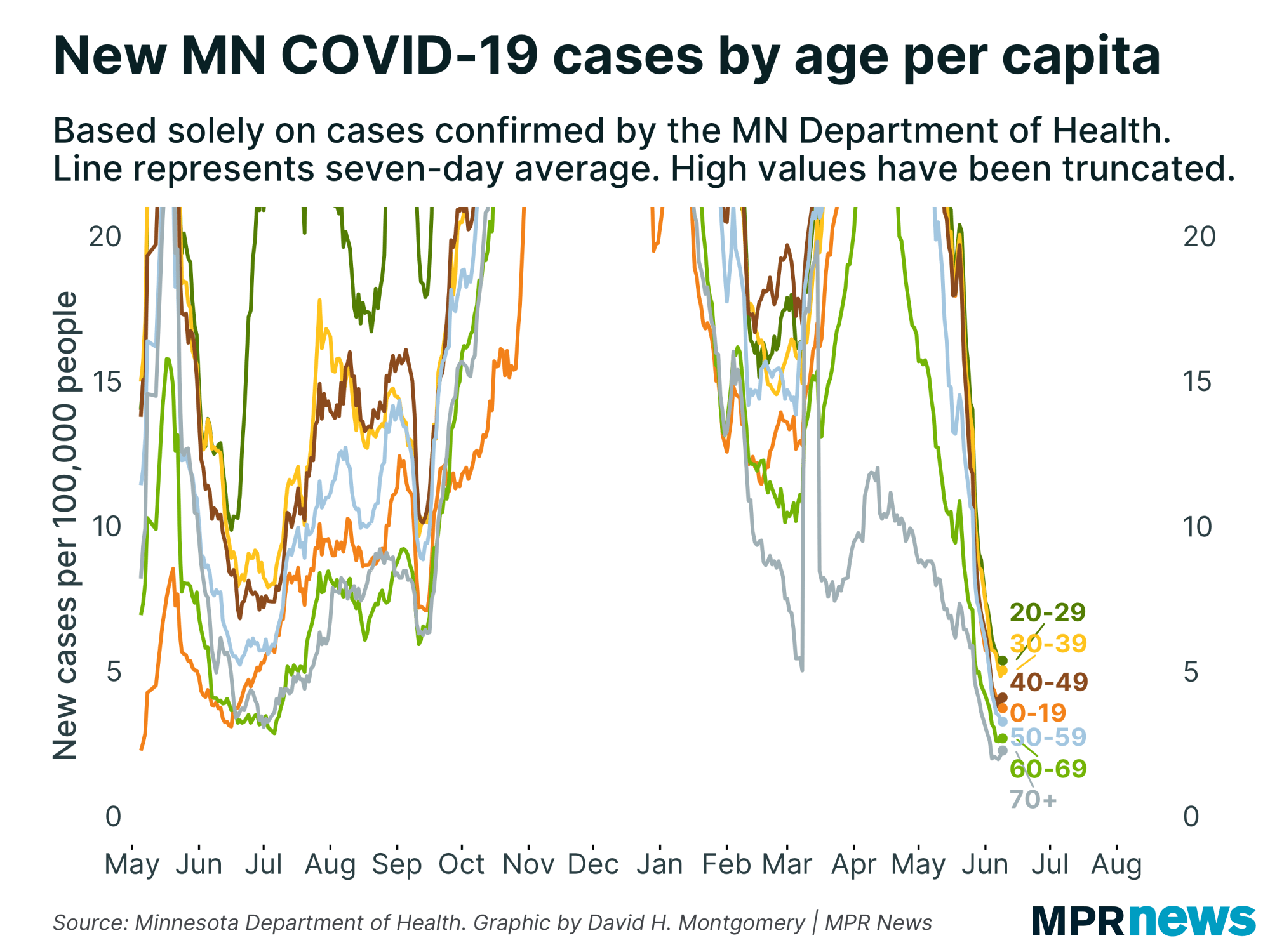
The number of high school-age youth confirmed with the disease has also grown, with more than 38,000 total cases among those ages 15 to 19 since the pandemic began.
With kids increasingly returning to school buildings and sports, Minnesota public health officials are urging Minnesota families with children to get tested every two weeks for COVID-19 now until the end of the school year.
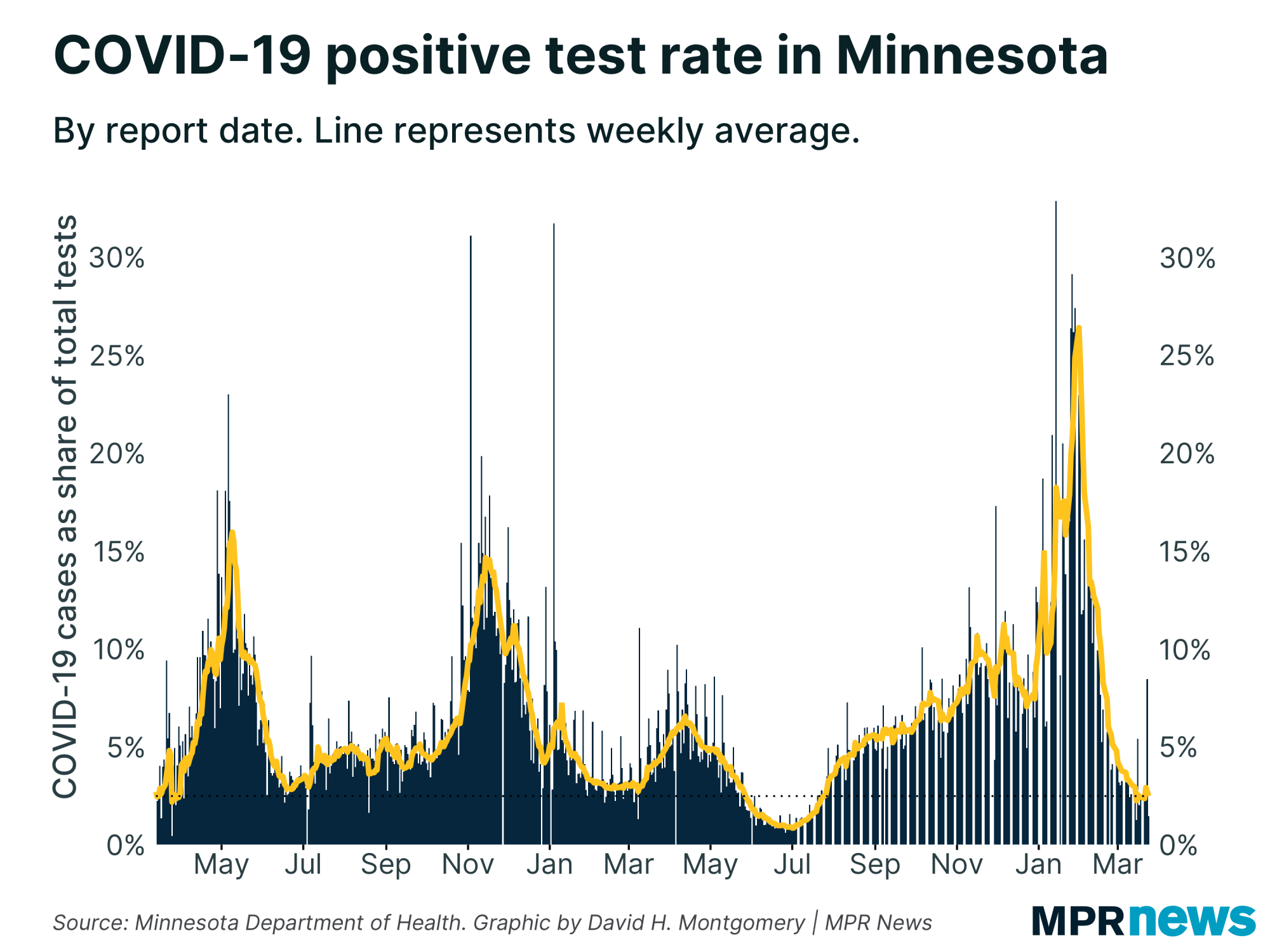
Although young people are less likely to feel the worst effects of the disease and end up hospitalized, experts worry youth will spread it unknowingly to older relatives and members of other vulnerable populations.
People can have the coronavirus and spread COVID-19 when they don’t have symptoms.
Regionally, most parts of Minnesota are down significantly from the late November and early December spike, as well as a smaller January uptick.
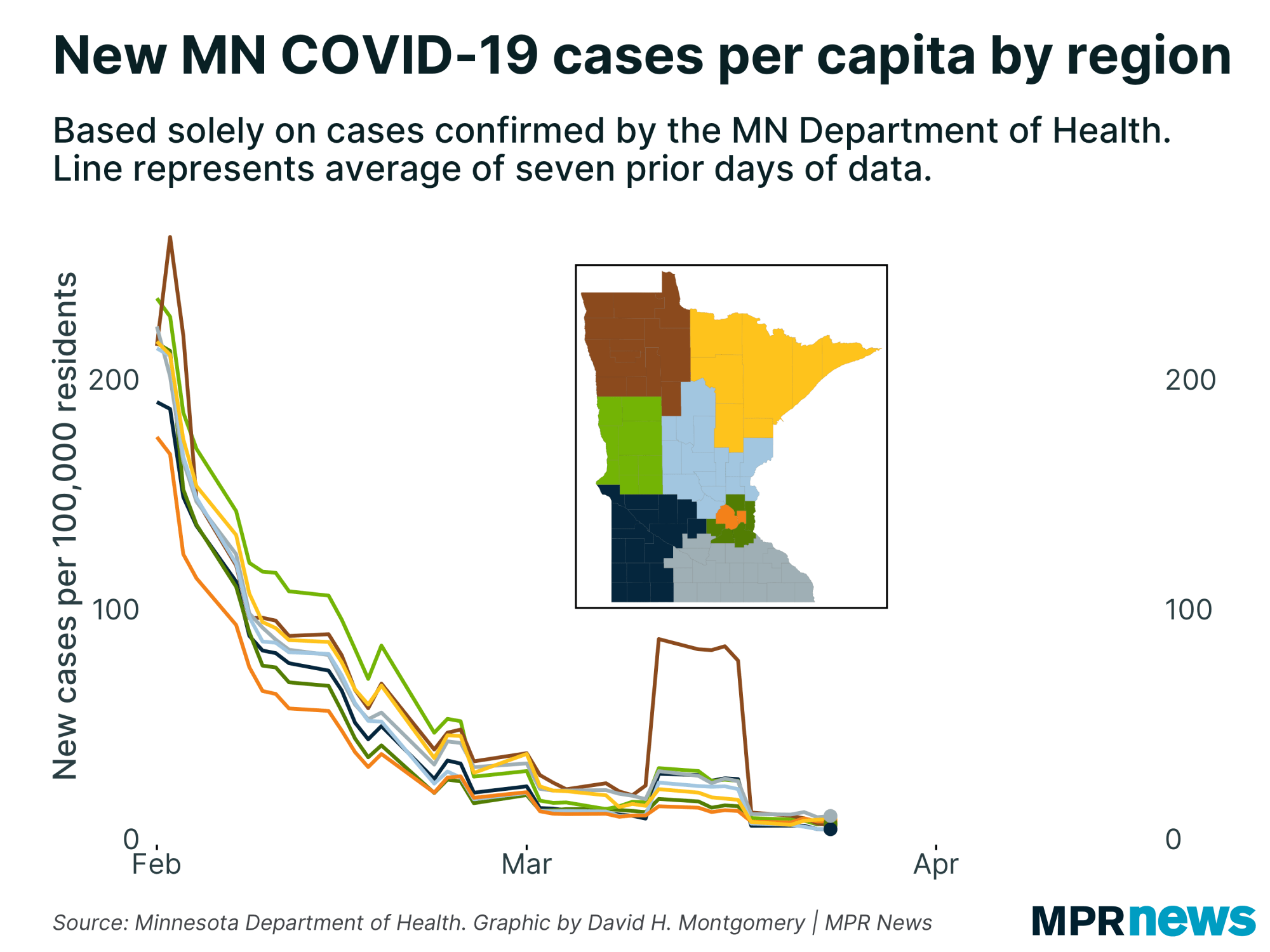
Caseloads still heaviest among people of color
In Minnesota and across the country, COVID-19 has hit communities of color disproportionately hard in both cases and deaths. That’s been especially true for Minnesotans of Hispanic descent for much of the pandemic.
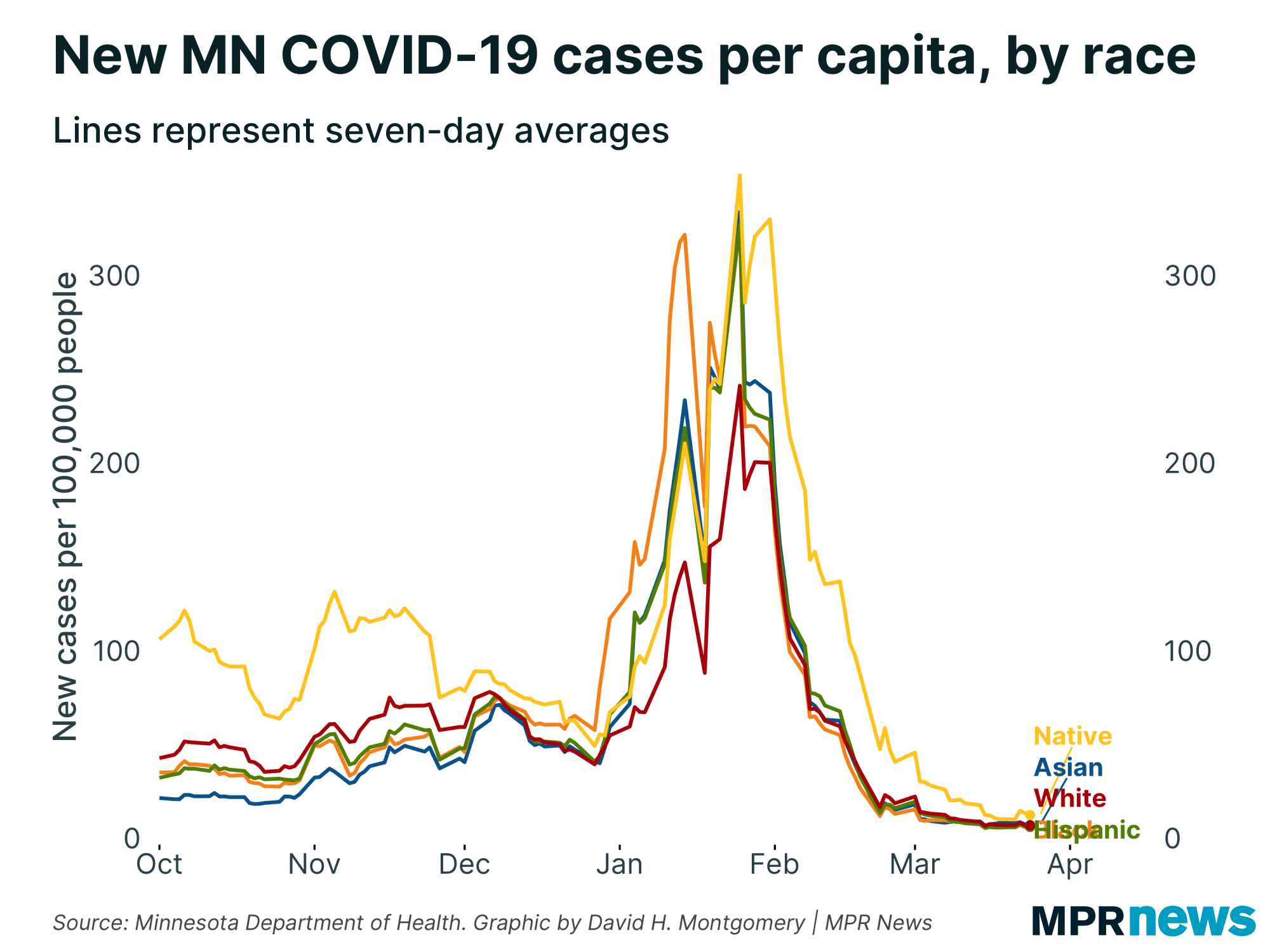
Even as new case counts continue to track well below their late November, early December peaks, the data shows Latino people continue to be hit hard.
Distrust of the government, together with deeply rooted health and economic disparities, have hampered efforts to boost testing among communities of color, officials say, especially among unauthorized immigrants who fear their personal information may be used to deport them.
Distrust by communities of color “is the thing that has plagued us for some time,” Walz said recently during a briefing promoting vaccinations for people of color.
Health Commissioner Jan Malcolm said that it’s been a “real problem” not having data broken down by race and ethnicity but that the state may have data to share soon.
Correction (March 5, 2021): An earlier version of this story described the total vaccinations as a percentage of Minnesota’s 16 and older population. The percentage includes the entire population.
COVID-19 in Minnesota
Data in these graphs are based on the Minnesota Department of Health's cumulative totals released at 11 a.m. daily. You can find more detailed statistics on COVID-19 at the Health Department website.
Latest developments
Don’t delay important medical care due to COVID, health care experts in NE Minn. urge patients
Hospital officials in Duluth say that people are foregoing needed health screenings and other medical care, presumably because of lingering fears of COVID-19.
Officials with Essentia Health and St. Luke's in Duluth are urging patients not to put off necessary health care until the pandemic is over. They say they've seen a drop in the number of people coming in for cancer screenings like mammograms and colonoscopies.
Essentia's Dr. Jon Pryor said the hospital performed 750 colonoscopies last year — that's a 33 percent drop from 2019.
"Please, please, please seek care if you need it so that your health doesn't deteriorate. Get the follow up care you need for conditions like diabetes and hypertension. Get your preventive care like colonoscopies and mammography,” Pryor urged patients.
Emergency room doctors in the area also say that patients are sicker than they used to be, suggesting they're waiting longer to seek care.
"My heart just breaks when I see patients who waited too long to see us and as a result have worse outcomes than they would have had otherwise,” said Essentia physician Andy Boehland. “This started to happen last spring when COVID was new and scary, but it's still happening today."
Doctors say they've also noticed a significant drop in vaccination rates for children for diseases like measles.
— Dan Kraker | MPR news
Top headlines
President Biden vows enough vaccine for all U.S. adults by end of May: President Joe Biden says the U.S. expects to take delivery of enough coronavirus vaccines for all adult Americans by the end of May, two months earlier than anticipated, as his administration announced that drugmaker Merck & Co. will help produce Johnson & Johnson’s newly approved shot.
In Cook County, volunteers help vaccinate a grateful public: Cook County, at the tip of Minnesota's North Shore, has the highest vaccination rate in the state. Nearly everyone in the county who is 65 or older has gotten their first COVID-19 shot. Several factors have contributed to Cook County’s success, including a small army of volunteers that’s played a critical role in getting the county vaccinated.


